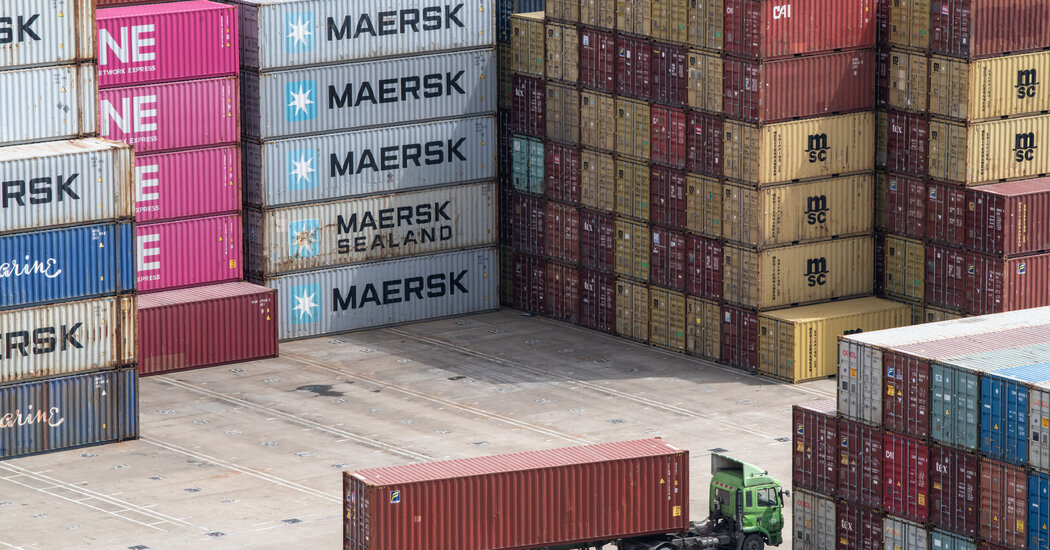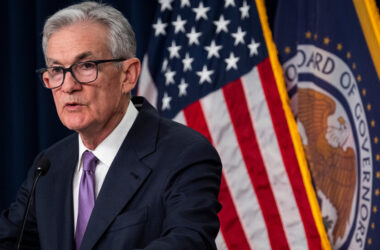For more than half a century, concerns about oil shortages or a damaged climate have spurred governments to invest in alternative energy sources.
In the 1970s, President Jimmy Carter placed solar panels on the roof of the White House as a symbol of his commitment to developing energy from the sun. In the 1990s, Japan offered homeowners groundbreaking subsidies to install photovoltaic panels. And in the 2000s, Germany developed an innovative program that guaranteed consumers who adopted a solar energy system that they would sell their electricity at a profit.
But no country has come close to matching the scale and tenacity of China’s support. The proof is in the production: In 2022, Beijing accounted for 85 percent of all clean-energy manufacturing investment in the world, according to the International Energy Agency.
Now the United States, Europe and other wealthy nations are trying frantically to catch up. Hoping to correct past missteps on industrial policy and learn from China’s successes, they are spending huge amounts on subsidizing homegrown companies while also seeking to block competing Chinese products. They have made modest inroads: Last year, the energy agency said, China’s share of new clean-energy factory investment fell to 75 percent.
The problem for the West, though, is that China’s industrial dominance is underpinned by decades of experience using the power of a one-party state to pull all the levers of government and banking, while encouraging frenetic competition among private companies.
China’s unrivaled production of solar panels and electric vehicles is built on an earlier cultivation of the chemical, steel, battery and electronics industries, as well as large investments in rail lines, ports and highways.
From 2017 to 2019, it spent an extraordinary 1.7 percent of its gross domestic product on industrial support, more than twice the percentage of any other country, according to an analysis from the Center for Strategic and International Studies.
That spending included low-cost loans from state-controlled banks and cheap land from provincial governments, with little expectation that the companies they were aiding would turn immediate profits.
And it was accompanied by what the United States and other countries have charged was China’s willingness to skirt international trade agreements, engage in intellectual property theft and use forced labor.
It all combined to help put China in the position today to flood rival countries with low-cost electric cars, solar cells and lithium batteries, as consumers across the wealthy world are increasingly turning to green tech.
China now controls over 80 percent of worldwide production of every step of solar panel manufacturing, for example.
“There’s enormous economies of scale by going big as China did,” Gregory Nemet, a professor of public policy at the University of Wisconsin who has studied the global solar industry. When the investments resulted in overcapacity, suppressing the profitability of China’s companies, Beijing was willing to ride out the losses.
President Biden and European leaders are determined to develop their countries’ manufacturing capacity in advanced technologies like semiconductors, electric vehicles and batteries, in part by adopting some of China’s tactics to nurture industries.
China’s rise to dominate key global manufacturing sectors showed the potential and power of national industrial policy, said Jennifer Harris, a former Biden aide who now leads the Economy and Society Initiative at the William and Flora Hewlett Foundation.
“Was it wasteful? Absolutely,” she said. “Was it successful? Absolutely.”
Mr. Biden and the heads of European governments are more willing to call out Beijing for what they say are illegal practices like purposefully subsidizing excess production and then dumping underpriced goods on other countries.
Beijing denies that it has violated trade rules, contending that its enormous industrial capacity is a sign of success. Xi Jinping, China’s top leader, said this month that China had increased the global supply of goods and alleviated international inflation pressures, while helping the world fight climate change.
Mr. Biden said this month that he would impose tariffs of up to 100 percent on imports of Chinese green technologies including electric vehicles. The aim is to deny China any more of an opening in America.
European officials are expected to impose their own tariffs soon — despite warnings from some economists and environmentalists that the measures will slow progress on meeting clean energy goals. Europe has become more worried about security issues as China has tilted its geopolitical stance toward Russia and Iran.
The West’s embrace of industrial policy is a departure from the ideology of open markets and minimal government intervention that the United States and its allies previously championed.
Policies prompted by the 1970s energy crises were largely reversed when Ronald Reagan was elected president in 1980. Even the solar panels installed at the White House during the Carter administration were removed.
Except for certain security-related industries, the United States adopted the view that an unfettered market always knows best.
“If the end result was that you had to rely on other countries for key parts, that was OK,” said Brad Setser, a senior fellow at the Council on Foreign Relations.
Joseph Stiglitz, an economist at Columbia University, said the United States had long lacked a broader industrial policy and a coordinated strategy.
“Even the Democrats were afraid to take a more aggressive government role,” he said, “and I think that was obviously a big mistake with long-run consequences.”
From the perspective of some Chinese economists, complaints about unfairness from the United States and Europe are a sign of their own governments’ failures.
“The West’s decision to pursue neoliberal economic policies was a strategic mistake, which led to the de-industrialisation of their economies and provided China with an opportunity,” Zheng Yongnian, a professor at Chinese University of Hong Kong, said.
Whatever mistakes were made, political leaders in the United States say they are determined not to repeat them.
Last year, the United States and European Union made “significant inroads” in clean energy technology, according to the International Energy Agency.
And the Biden administration’s multibillion-dollar program is one of the most extensive uses of industrial policy in American history.
Mr. Biden’s tariffs are a targeted escalation of an American trade offensive against China that began under former President Donald J. Trump. Mr. Trump imposed tariffs on imported goods from China valued at more than $350 billion a year, drawing retaliatory tariffs from Beijing. Mr. Biden has kept those tariffs, has added or increased them for clean energy and has raised new barriers to trade with Beijing, including denying China access to advanced semiconductors from the United States.
Mr. Biden’s trade agenda is “very, very aggressive,” said David Autor, a Massachusetts Institute of Technology economist who has extensively documented the effects of trade with China on the American economy, including factory job losses.
In his view, there are critical distinctions between Mr. Biden’s trade strategy and Beijing’s as both nations seek to lead the clean-energy race.
China was more focused on sending low-cost exports to global markets, Mr. Autor said, and preventing foreign firms from dominating China’s domestic markets.
Mr. Biden, he said, is more focused on keeping out imports from China and denying China access to some key American technologies, like advanced semiconductors.
At a meeting last week in Italy of the Group of 7 finance ministers, leaders from both sides of the Atlantic warned that the United States and Europe must coordinate their protectionism and their subsidies if they hope to catch Beijing in the race to dominate key industries.
“Overcapacity threatens the viability of firms around the world, including in emerging markets,” Treasury Secretary Janet L. Yellen said on Thursday.
“It’s critical,” she added, “that we and the growing numbers of countries who have identified this as a concern present a clear and united front.”




